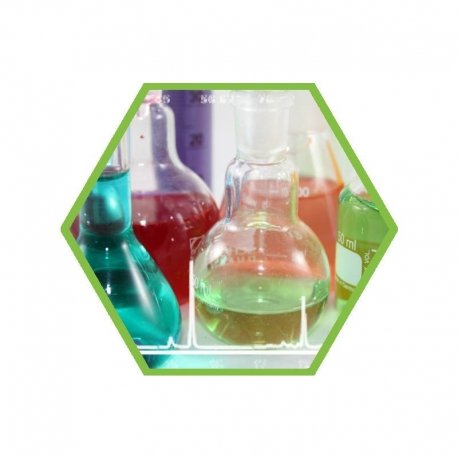{:de}

Die Verpackung von Lebensmitteln ist sinnvoll und wichtig. Sie schützt das Lebensmittel vor Keimen, hält es gegebenenfalls länger frisch und ermöglicht es, definierte Mengen für den Verbraucher bereitzustellen.
Können Verpackungen zum Problem werden?
Abgesehen von den ökologischen Problemen, die ein “zu viel” an Verpackung sowie die Verpackungen aus Kunststoff verursachen, können aus den Folien, den Papier- und Pappkartons sowie den Kunststoffbehältnissen Stoffe in die Lebensmittel übergehen. Dabei hängt die Menge des in das Lebensmittel migrierenden Stoffes davon ab, ob er in der Lebensmittelmatrix gut löslich ist. So werden lipophile Wachse nur in sehr geringem Maße in einen Apfelsaft migrieren; in ein Ölivenöl hingegen in deutlich höherem Maße.
Ob dieser Übergang toxikologisch relevant oder gar bedenklich ist, kann in Migrationsversuchen ermittelt werden. Entsprechend den Vorgaben einer EU-Norm werden die Lebensmittel/Verpackungskombinationen in Modellen simuliert. Für die Kombination Käse/Kunststofffolie würde man im Modell ein Öl mit der Folie in Kontakt bringen und die Menge der in einer bestimmten Zeit unter definierten Umgebungsbedingungen migrierten Stoffe bestimmen. Man spricht hier auch von Totalmigration. Im Einzelnen kann man dann die Art und die Menge jeden einzelnen migrierten Stoffes analysieren. Hier spricht man dann von der spezifischen Migration.
Was sind das für Stoffe, die ins Lebensmittel wandern?
In der Presse der letzten Jahre erschienen Berichte über
- Weichmacher in Olivenöl (aus den Schläuchen, die die Anlagenteile der Mühle verbinden)
- Fotostabilisatoren in Joghourt (aus dem Aufdruck von Joghourtbechern)
- Mineralölkohlenwasserstoffe in den verschiedensten Lebensmitteln (aus Pappkartonagen)
- Nonylphenol in Deckeldichtungen
- Pentachlorphenol in Tee (aus Holzkisten)
- Acetaldehyd in Mineralwasser (aus PET-Flaschen)
- ESBO (Epoxydized Soy Bean Oil) aus Deckeldichtungen
- u.v.a..
Wie kann man das Risiko der Kontamination des Lebensmittels verringern?
Der Lebensmittelproduzent und Abpacker sollte sich nicht nur verlassen auf die Auslobung “lebensmitteltauglich”; er sollte wissen, welche Materialien er einsetzt und welche Inhaltsstoffe diese enthalten. Nur so kann er entscheiden, welches das geeignete Packmaterial für sein Produkt ist. Entsprechende Informationen sollten vom Verpackungslieferanten bereitgestellt werden. Häufig ist es aber so, dass selbst die Verpackungslieferanten und -produzenten nicht genau wissen, welche Stoffe in den Rohwaren enthalten sind. Dies gilt insbesondere in den Bereichen, in denen Recycling-Materialien verwendet werden. Aber auch bei Rohmaterialien und Verpackungen, die beispielsweise aus China eingekauft werden, ist eine eigene Qualitätskontrolle empfehlenswert.
Für Verpackungen aller Art gilt auch in Anbetracht der hohen Recyclingraten: Weniger ist mehr
Verpackungsanalysen von my-lab International:
 |
Weichmacher / Phthalate (SVHC) in MaterialMCSV1 Downloads: |
 |
ESBO in MaterialMCWM1 Downloads: |
 |
BpA, BADGE, BFDGE, NOGE in MaterialMCB01 Downloads: |
 |
Lacke und Kunststoff: Schwermetalle – Pb, Cd, Hg und Brom mittels RFA (Röntgenfluoreszens Analyse)MACZ4 Downloads: |
 |
Globalmigration 10% EthanolZKE01 |
Bildnachweise
- Titelbild + Beitragsbild | Quelle: my-lab International | Modifiziert von my-lab International
{:}{:en}
Packaging food stuffs is practical and important. Packaging protects food stuffs from germs, may help keep them fresh for longer periods of time, and allows preparation of defined amounts for the consumer.
Can packaging become a problem?
Quite apart from the ecological issues caused by ‘too much’ packaging or packaging made of plastics, it is possible that various compounds could be transferred to the food itself from the wrapping, paper and cardboard cartons or plastic containers. The amount of the compound that migrates into the food stuff is dependent on how soluble it is within the food matrix. For example, a lipophilic wax will transfer into an apple juice in very small amounts only, while the same wax will migrate in much larger quantities into olive oil.
Whether or not this transfer is relevant, or perhaps even problematic in regards to toxicology, can be determined via migration tests. In compliance with EU Norm requirements, the food stuff/packaging combination is simulated by way of modelling. For the combination cheese/plastic wrap, the model would work as follows: an oil would be brought into contact with the wrap and the quantity of substances that migrate from the wrap to the oil within a specific time frame and under defined environmental conditions would be determined. This is also known as total migration. Afterwards, it is possible to analyse the type and amount of each individual substance that underwent migration. This is known as specific migration.
What type of substances transfer to food stuffs?
Over the last few years, reports have appeared in the media regarding
- Plasticiser in olive oil (from the hoses that connect system parts in the mill)
- Photostabilisers in yoghurt (from the print on yoghurt containers)
- Petroleum-derived hydrocarbons in all sorts of food stuffs (from cardboard boxes)
- Nonylphenol in lid seals
- Pentachlorphenol in tea (from wooden boxes)
- Acetaldehyde in mineral water (from PET bottles)
- ESBO (Epoxydized Soy Bean Oil) from lid seals
- and more
How do we reduce the risk of food contamination?
The food producer and packager should not rely on the promise that packaging is ‘suitable for food’; instead, they should know which materials they are using and what substances they contain. This is really the only way to decide on suitable packaging for the product. The relevant information should be provided by the packaging supplier. However, it is often the case that even the packaging supplier and producer do not exactly know which substances are contained within the raw materials. This is particularly true for areas in which recycling materials are in use. But it is also advisable to carry out quality control for other raw materials and packaging, for example those purchased from China.
For packaging of all types, particularly in light of the high rates of recycled materials: less is more
 |
Phthalates (SVHC) in materialMCSV1 |
 |
ESBO in materialMCWM1 |
 |
BpA, BADGE, BFDGE, NOGE in materialMCB01 |
 |
plastics: Pb, Cd, Hg and bromine by XRF ( X-ray fluorescence analysis)MACZ4 |
 |
global migration 10% EthanolZKE01 |
Bildnachweise
- Titelbild + Beitragsbild | Quelle: my-lab International | Modifiziert von my-lab International
{:}




